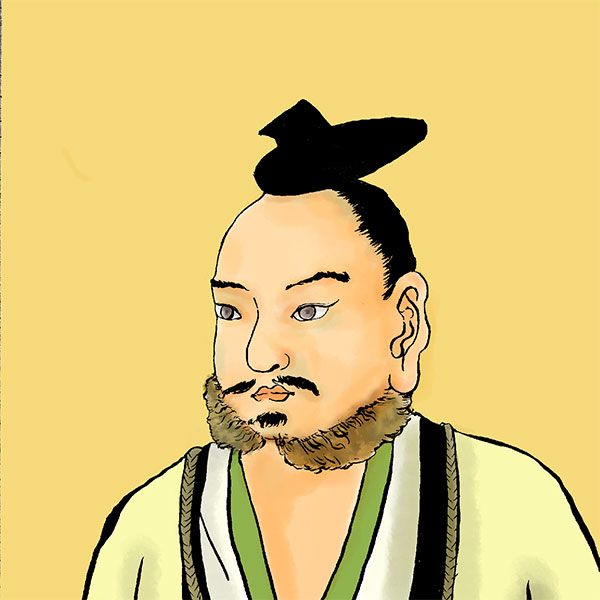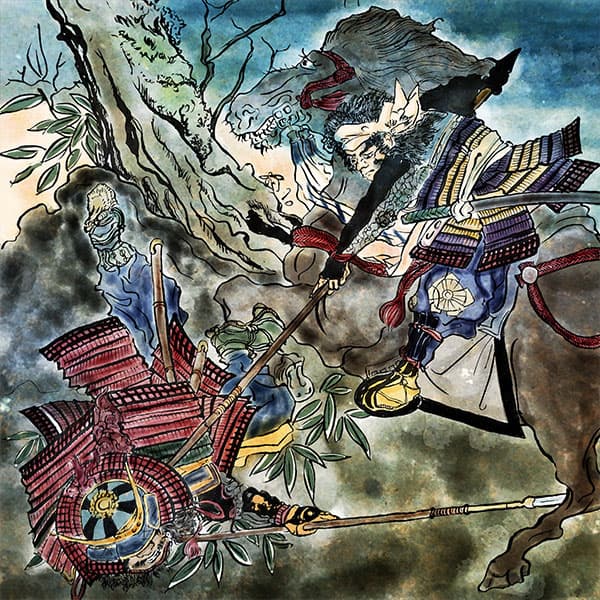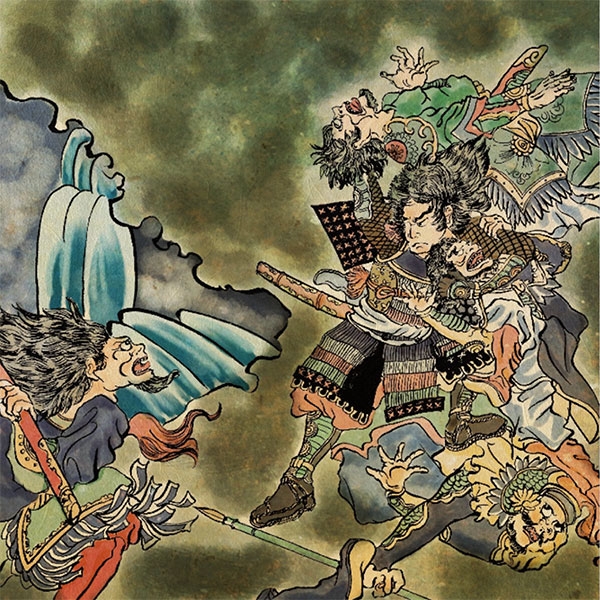Yuhei Ito (2/2)The founder of the Ito clan

Yuhei Ito
- Article category
- biography
- name
- Ito Yuhei (1559-1600)
- place of birth
- Miyazaki prefecture
- Related castles

Obi Castle
- related incident
For his achievements in the Kyushu Peace War, he was given a total of over 2,024 towns of land in Usuki District, Miyazaki District, Kiyotake District, Moroken District, Yatsushiro District in Higo Province, and Takasu no Kami (Merayama) in Higo Province, and was transferred from Kawachi Tanna. It was sealed. Yuhei restored Soi Castle and made it his main castle. In August of the same year, Hideyoshi also gave him Obi Castle, and in May of the following year, 1588, he entered Obi Castle and regained his former territory. In August, an additional 1,736 towns of land were added to Miyazaki and Naka counties.
In 1594, the territory of over 28,000 koku was cultivated and the land was reduced to 36,000 koku, which was confirmed by the Bunroku survey. During New Year's Day in 1595, he chased away a large tiger while falconrying in Korea, and his vassal shot him with a matchlock and presented it at Nagoya Castle, where Hideyoshi gave him a calligraphy.
During the Aizu conquest and the Battle of Sekigahara in 1600, Sukehei was sick at his mansion in Osaka and did not participate.
The Western army persistently solicited them, and they suspected that it was a fake illness, but when Yoshihiro Shimazu visited his bedside and learned that he was seriously ill, he burst into tears and assured them that he was not siding with the Eastern army, but the Otsu castle To send troops into battle.
It was decided that 30 people would be sent to support the western army, with two vassals, Ito Yohei and Hiraga Kizaemon, acting as their representatives.
On the other hand, he secretly ordered Shigemasa Inatsu, the chief retainer, to return to his territory with his eldest son, Yukei, and have him join the eastern army. After consulting with Yoshitaka Kuroda, Yukei led 3,000 soldiers and attacked Miyazaki Castle, which was the territory of Motatsune Takahashi of the Western Army.
The Ito clan's participation and contribution to the Eastern Army was recognized, and after the war, Ieyasu guaranteed their territory. Furthermore, he was ordered to advance his army to the Shimazu clan in Satsuma Province, which had not yet surrendered to the western army. However, Yuhei died of illness on October 11 of the same year at the age of 42. His eldest son, Yukei, took over.
Yuhei Ito's wisdom
During the Bunroku era, a commotion broke out within the Ito family.
This was a move to install Yoshimasu's eldest son, Yoshikata, who had traveled to Korea with him, as the head of the Ito family. Although his legal wife was the daughter of Sukehei's late brother Yoshimasu, Yoshikata took over the headship of the family in 1577. It is said that Yuhei assassinated his nephew Yoshikata to bring the commotion under control.
Although Yuhei was born as the son of a feudal lord, he was a hard worker, and it is said that he had an excellent ability to see the current situation, as he was able to make a comeback without any effort.
At the time of the Battle of Sekigahara, which marked the end of the world, he fell seriously ill and lay in bed, but while pretending to support the Western army, he secretly informed the Eastern army and promised cooperation. You can tell that he's a good person when it comes to daily life.
Sukehei ostensibly intends to support the Western army along with Shimazu, but Toyohisa Shimazu becomes suspicious and visits Sukehei's residence to interrogate him. However, Yuhei dodged the questioning by citing his own illness, and instead displayed a realistic behavior that earned Toyohisa's sympathy.
Behind the scenes, he secretly dispatched his heir, Yukei, to Kyushu to attack Miyazaki Castle from the western army.
In the end, Sukehei died at the age of 42 after Sekigahara, but the Ito family was given peace of mind by the Tokugawa shogunate, and its territory spanned 57,000 koku across the entire Obi area, continuing as the lord of the Obi domain until the end of the Edo period.
Obi Castle
Obi Castle is said to have been built during the Nanbokucho period by the Tsuchimochi clan, who were descended from the priests of Usa Hachimangu Shrine and had expanded their power as a samurai group in the Hyuga region, and it was also called Obi-in. .
Later, during the Warring States period, it was placed under the control of the Shimazu clan, but the Ito clan invaded and took it over. After that, a battle between the Shimazu clan and the Ito clan continued.
During the Edo period, it prospered as the domain office of the Ito clan and Obi domain. It is a Hirayama castle in the Gunkaku style, with many curved walls lined up on the hill in the northern part of Obi city, and is one of the 48 castles of Ito.
After the war, the Otemon Gate was restored in 1978, and a wooden history museum modeled after a palace was built inside the castle. However, since there is no original external appearance material for these buildings, their shapes are based on historical research and are not reconstructions of historical facts. Additionally, Nichinan City Obi Elementary School is built on the site of the main enclosure. Also,
It was also the filming location for the NHK TV drama series ``Wakaba''.
On April 6, 2006, it was selected as one of Japan's top 100 castles (number 96).
In 1977, Obi Castle Town (Obi) was selected by the national government (Minister of Education, Culture, Sports, Science and Technology) as the first "Important Preservation District for Groups of Traditional Buildings" in the Kyushu/Okinawa region (along with Fukiya in Okayama Prefecture, it is one of the first "Important Preservation Districts for Groups of Traditional Buildings" in Japan). (one of the second two selected districts).
Within the preservation area, the roads and plots of land from the castle town period are well preserved, and the ruins of samurai residences surrounded by stone walls, earthen walls, and hedges remain. It includes Yushangkan, the mansion where Ki lived, Shintokudo (a domain school), Ioshi Shrine, and Komura Jutaro's birthplace.
Obi Castle Festival
Nichinan City's representative fall festival is a two-day festival where you can fully enjoy the atmosphere of the castle town, including local performing arts, a parade through the city including a samurai procession, and the traditional Shihanmato competition. is. It is usually held on the Saturday and Sunday of the third week of October, and is crowded with local residents and many tourists.
On Saturdays, the early morning horses rush to the Otemon Gate in the castle town at 11 a.m. as the signal goes up. Afterwards, stage events such as local performing arts and song shows will be held in front of the Otemon Gate and on a special stage inside the castle (Obi Elementary School grounds) in which citizens can participate.
The highlight of the main festival on Sunday is the city parade that starts at 12 noon on Honmachi Merchant Street. Samurai generals, female warriors, warrior parades, Taihei Odori dances, etc. parade until around 4:30 p.m.
In the Taihei dance, the dancers wear folded knitted hats, Habutae noshime (habutae noshime), and zori sandals with white tabi socks. He dances in a stylish Genroku warrior outfit, with a sword in a vermilion scabbard and an inro on his waist. It is said that the Ito clan, the lord of the Obi domain, combined Kamigata's kabuki dance with the local Bon dance, and incorporated 18 martial arts such as jujutsu and archery into it. The movements are slow, the dancing is beautiful, and the dance has a profound impression.
Reread Yuhei Ito's article
- related incident

- WriterTomoyo Hazuki(Writer)I have loved history and geography since my student days, and have enjoyed visiting historical sites, temples and shrines, and researching ancient documents. He is especially strong in medieval Japanese history and European history in world history, and has read a wide range of things, including primary sources and historical entertainment novels. There are so many favorite military commanders and castles that I can't name them, but I especially like Hisashi Matsunaga and Mitsuhide Akechi, and when it comes to castles, I like Hikone Castle and Fushimi Castle. Once you start talking about the lives of warlords and the history of castles, there's a side of you that can't stop talking about them.





